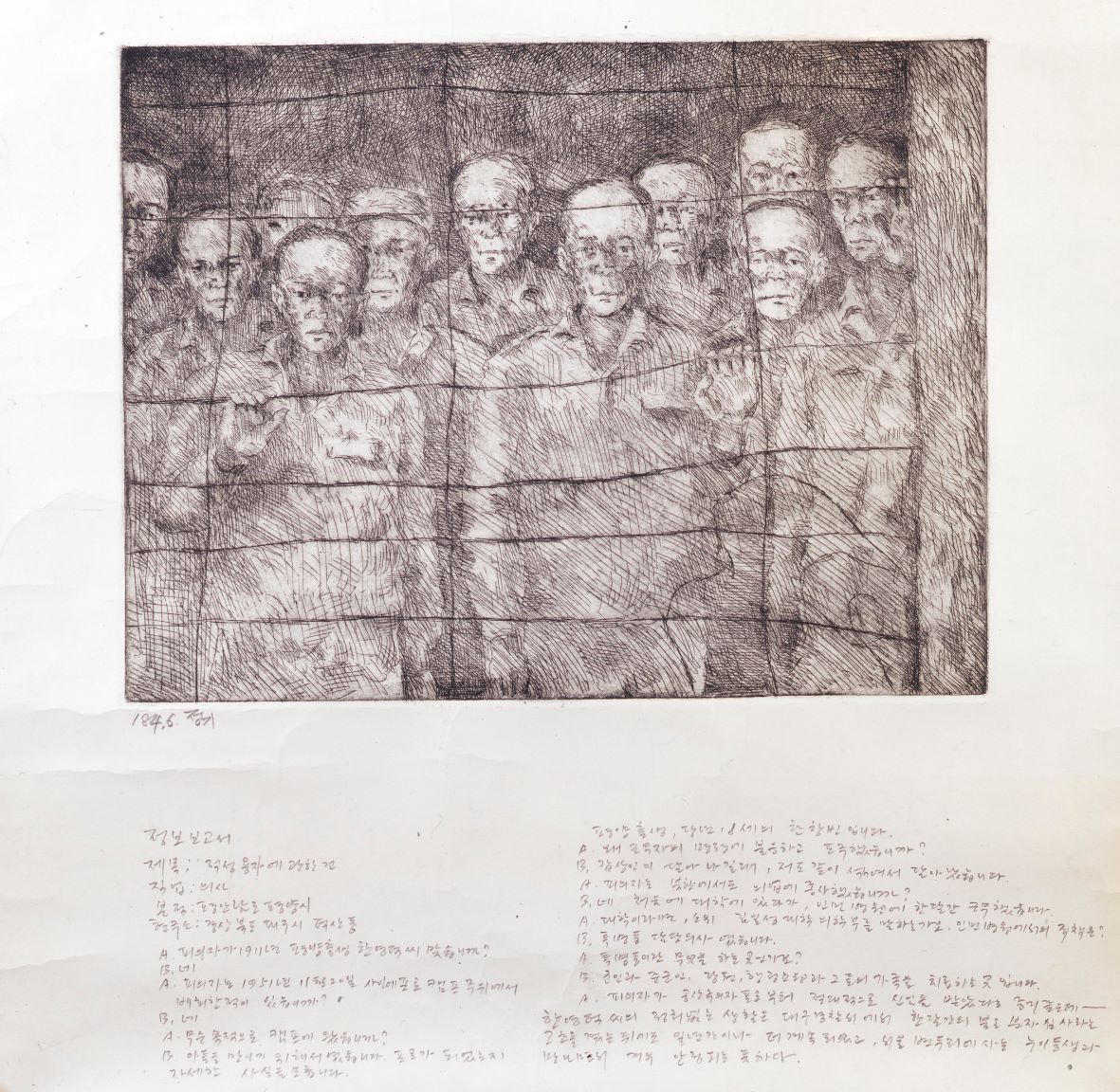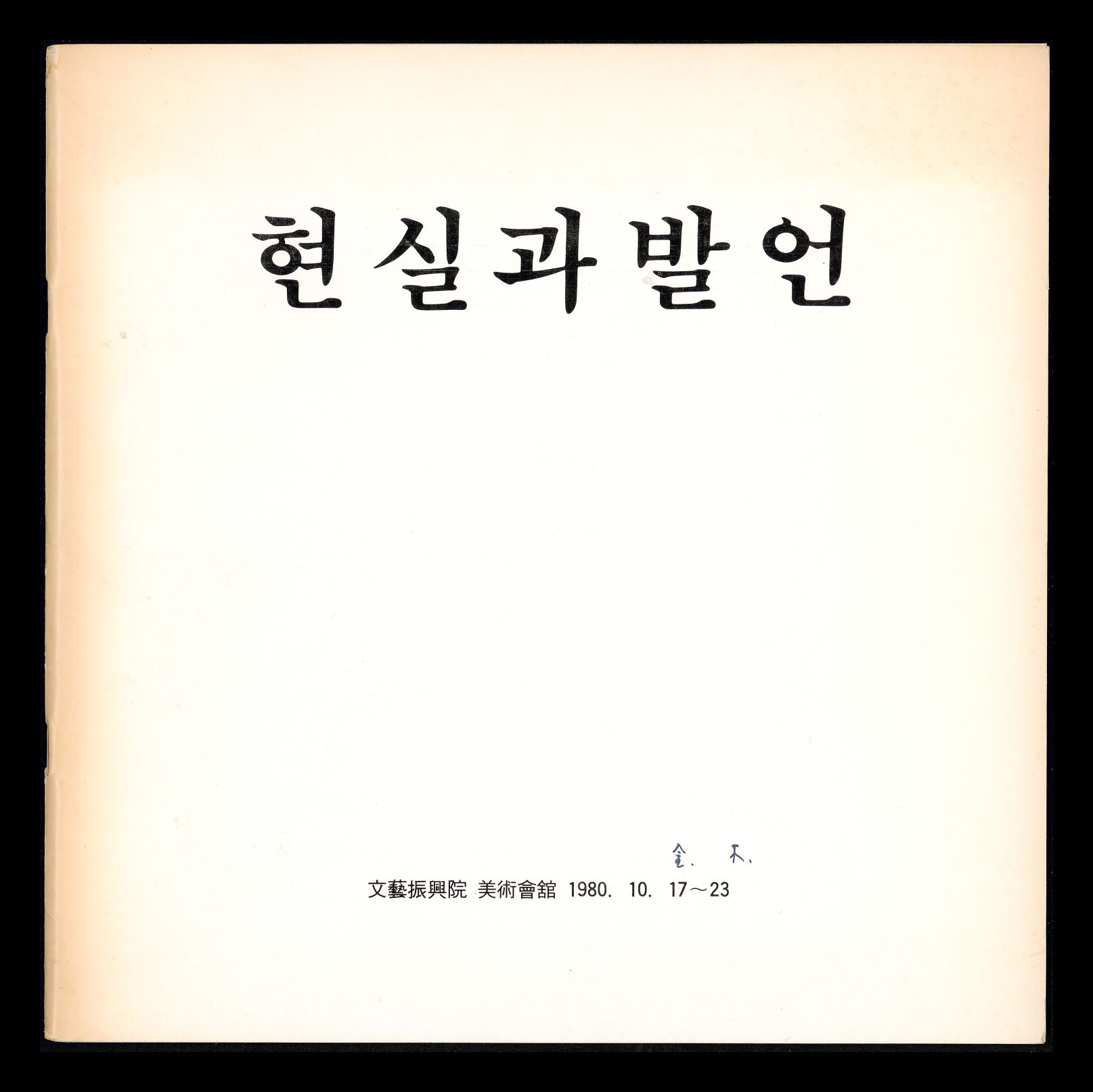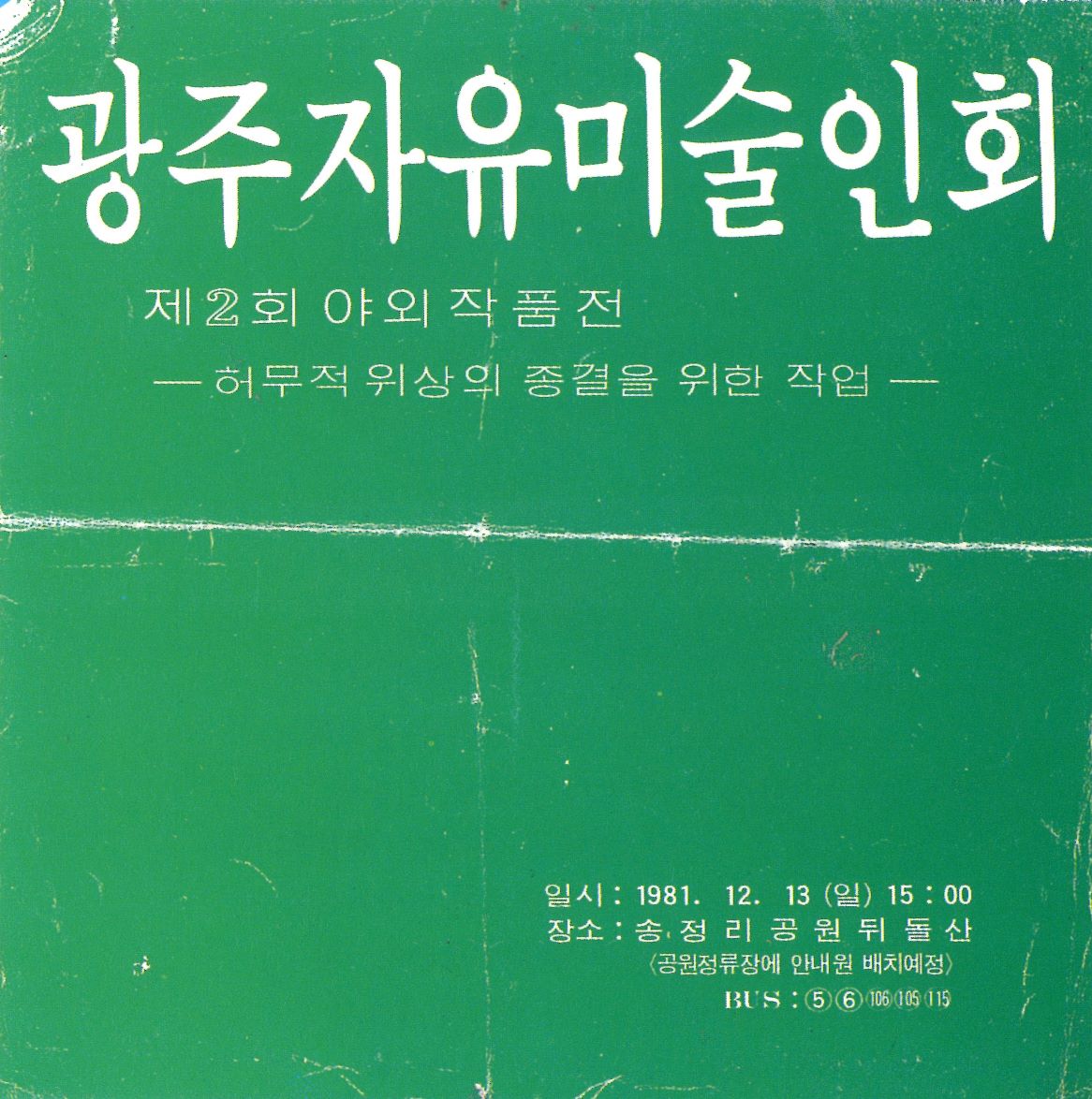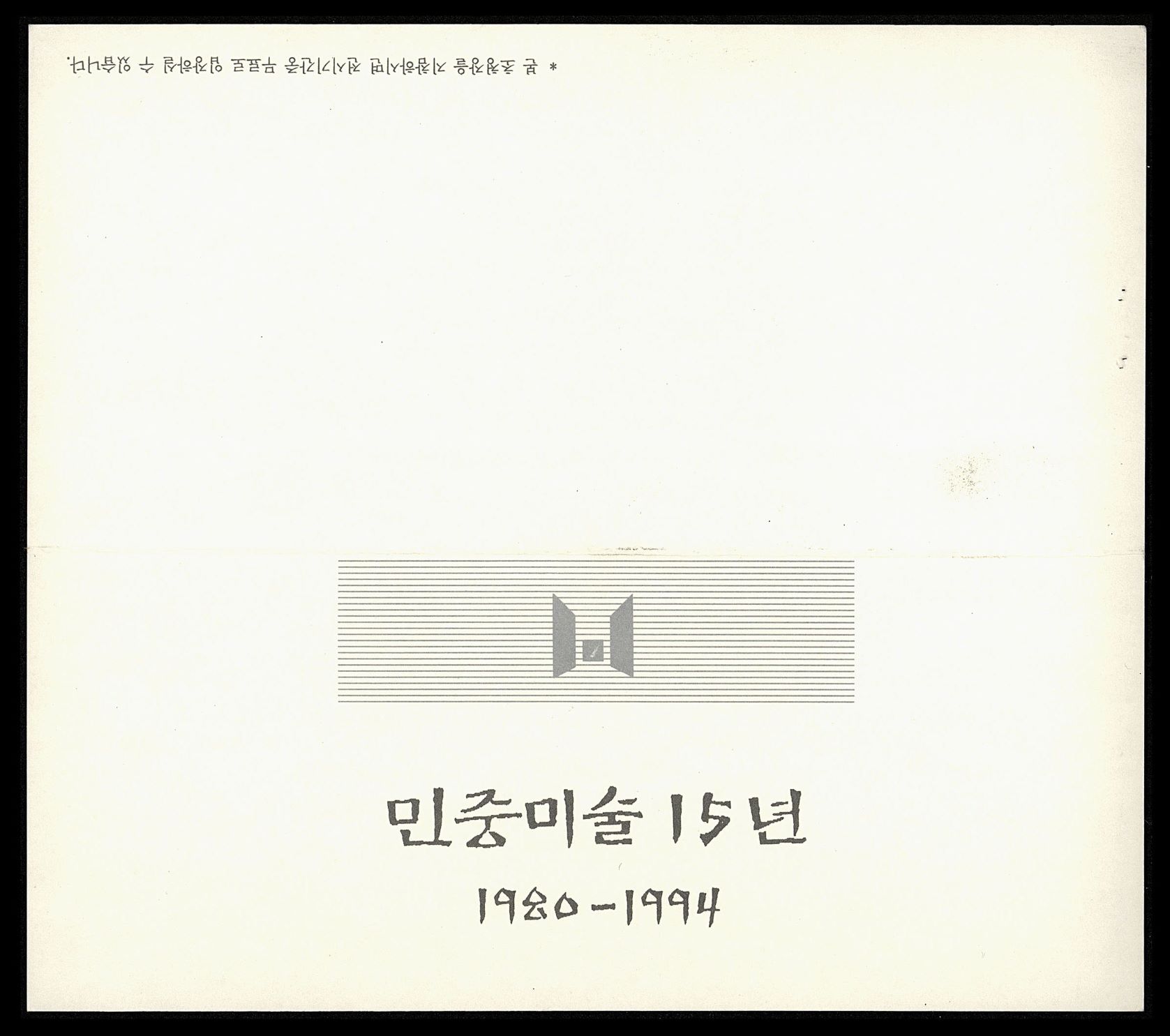
Min Jounki, The Han's Chronicle 1, 1984, Etching on paper, 53.5×53.5cm. MMCA collection
Realism
* Source: Multilingual Glossary of Korean Art by Korea Arts Management Service
Related
-

Reality and Utterance
A group formed in 1979 by artists and critics that criticized the contradictory nature of industrial society and the conservatism of the art community. The group formed during preparations for an exhibition to mark the 20th anniversary of the 1960 April Revolution. The group emphasized a realistic attitude, namely that art must depict reality and reveal the underlying contradictions of society. The group borrowed from or copied pop culture images, and also used photography, prints, comics, reproductions, and collages. Such methods were considered a means to help critically address the overabundance of visual images in contemporary Korean society, the issues of urbanization, and the colonial nature of Korean culture.
-

Gwangju Freedom Artists Association
An art organization established in Gwangju and related to the early 1980s Minjung art movement. The Minjung art movement fought for art based on real life, in critique of the government-controlled art system and the art for art’s sake movement in the 1970s. The Gwangju Freedom Artists Association emphasized “art from the bottom”, art that can be created by public collaboration and appropriation, not by elites or art professionals. In September 1979, Hong Sungdam, Choi Youl, Kim Sanha, Lee Youngchae, Kim Yongchae, and Kang Daegyu prepared an exhibition. They later participated in the Gwangju Uprising in May 1980. They performed a shamanic ritual for cleansing a dead person's soul in the Nampyung Deudeulgang River in 1980, and also hosted outdoor exhibitions that commemorated the Gwangju Uprising in Songjeong-li, Gwangju in December 1981. The association opened the Citizens Art School in 1983 and engaged in a site-based art movement. The public print movement was expanded to Seoul, Seongnam, Incheon, Mokpo, and Iksan. In December 1985, its name was changed to the Visual Media Center. Their activities contributed to the foundation of the National Art Association (Minjok misul hyeopuihoe) in 1985.
-

Minjung Art
An artistic movement that came to prominence alongside Korea’s democratization movement in the 1980s. Minjung artists often sought to critically portray the violent repression and corruption of the military dictatorship, to represent the experiences of laborers and farmers, and to achieve social change through art. In contrast to abstraction, which constituted the mainstream of 1970s art in Korea, Minjung Art is notable for the use of representational and figurative forms. One possible point of origin for Minjung Art is Oh Yoon’s work in the Reality Group (Hyeonsil dongin). The group was formed in 1969 by Kim Ji-ha, Oh Yoon, and Lim Se-taek. A variety of Minjung art groups were established, including the Reality and Utterance (Hyunsilgwa bareon) in 1979 by Kim Jungheun, Oh Yoon, Joo Jae-hwan, art critic Sung Wan-kyung, and Choi Min, the Gwangju Freedom Artist Association (Gwangju jayu misulin hyeopuihoe) in 1979 by Hong Sungdam and Choi Youl, the Imsulnyeon (The Year Imsul) in 1982, and the Dureong in 1983. These groups all commonly critiqued Western capitalism. In terms of form, Minjung artists adopted traditional and ethnic folk modes of expression using diverse media such as collage, printmaking, oil painting, and photography. Following the 15 Years of Korean Minjoong Arts: 1980-1994 Exhibition at the National Museum of Modern and Contemporary Art, Minjung Art became an accepted part of Korean art history. Overseas, Minjung Art has also become a recognized term that describes this genre and its unique focus on the political and social history of Korea.






